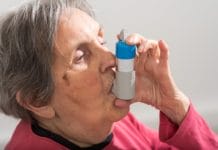A particularly intriguing study from the field of anthropology may give modern dental practitioners a way to see if their patients are low on Vitamin D.
Vitamin D is produced by the human body in the presence of sunlight and is necessary for bone growth and health — including teeth. The fat-soluble vitamin is also needed for cell growth, immune system function and reduction of inflammation, but it’s available in few foods. Humans must receive sufficient sunlight, or get the vitamin from supplements and supplemented foods like milk.
How Healthy and Deficient Teeth Differ
Now, using X-rays of teeth to try and determine the health status of ancient peoples, anthropologists have discovered that the pulp shape in a healthy human molar is very different from that of a person who has suffered from rickets, or chronic Vitamin D deficiency.
Previously, researchers had to cut into — and destroy — teeth to better understand the health of that person.
“We were looking for a non-destructive method so we wouldn’t need to destroy precious archaeological material to see if there had been a deficiency,” says Lori D’Ortenzio, the paper’s lead author and a Ph.D. candidate in anthropology at McMaster University in Canada.
In an attempt to use X-rays to examine deformities in dentin, D’Ortenzio and the other researchers at McMaster University, found the telltale differences in tooth pulp structure that indicate lack of Vitamin D. These “pulp horns,” or shadows that show at the center of a tooth in an X-ray, should ideally have a more spread-out “U” shape. Insufficient Vitamin D is reflected in a chair-shaped pattern that looks more like a skinny “H.”
The research was published in the International Journal of Paleopathology — generally not a popular title with dentists — that normally covers topics related to how various health issues show up on medieval-era skeletons. The published material shows the differences in archaeological specimens with vitamin D deficiency and modern, healthy teeth.
“It wasn’t just that it looked different. It was different,” explains Megan Brickley, a Professor of Anthropology at McMaster who is a co-author of the study. “It was a piece of work that aimed to look more at past individuals, but it has the potential to contribute to modern health care as well.”
Besides helping prevent bone loss, any data about Vitamin D deficiency could also be extremely useful in finding the right balance of UV exposure. A certain amount is necessary for the body to make Vitamin D, but too much can cause skin damage and lead to an increased risk of skin cancer.
How This Research Can Help Dental Professionals
Modern applications can include determining if children with growing bones are at risk of Vitamin D deficiency and preventing increased bone loss for adults in the jaw and teeth. Additional studies have shown a link between bone loss that causes osteoporosis in the body and low bone mass in the jaw, which is a significant factor in periodontal disease.
Traditionally, vitamin D deficiency has been diagnosed only through comprehensive blood testing. Using routine dental X-rays to look for potential issues could catch a deficiency before it can negatively and permanently impact the patient.
Additional research by dental experts could shed more light on how to quickly identify Vitamin D deficiency on a routine X-ray and how this will best benefit patients. Eventually, X-ray screening could become an important part of identifying the early stages of bone loss and gum disease. In the meantime, dentists can take a quick look at their patients’ X-ray images and suggest a trip to a medical doctor or another practitioner for further testing if the signs in the tooth pulp point to a problem.











